
Review on 📡 MakerFocus 5pcs NRF24L01+ Adapter ESP8266 ESP-01 Adapter Module for Wireless Transceiver Module and WiFi Module: A Comprehensive Solution by David Bowens

Quickly start implementing this microcontroller idea.
Let's make a reservation right away, this won't replace your computer, it won't replace many microcontrollers, but it won't make it unusable either. You will see many reviews telling you that there are only 2 GPIO pins. This is not entirely correct. The reality is that there are four physical GPIO pins on the header since pins rx and tx can be used as GPIO pins just like pins D0 and D1 can be used on an Arduino Uno. It is assumed that you will not use them for serial I/O, but if you configure this device to collect data from devices and transmit that data to a server or one of the various cloud services via a Wi-Fi connection uploads , you really don't need it anyway. You need rx/tx pins for console I/O, and it's not a bad idea to use them. As you explore different sensors and output devices, you will find that many of them only support or even use i2c or iic. Pretty much any of these devices with Arduino support libraries can be used directly from any of the gpio pins configured as sdc and sda. Probably the most common example of this is pairing multiple i2c devices, a real-time clock, a humidity/barometric pressure/temperature sensor, and an i2c-enabled OLE display, and you have a watch-sized weather station. Or skip the real time clock as you can get the time from an even more accurate time source via NTP. Use a pcf8574 to convert those two i2c pins into 8 I/O pins, or better yet, append 8 of them to the i2c pins and get 64 I/O pins (digital) while using the Pressure, temperature and humidity sensor time. Oh, and you can use those 64 I/O pins to drive an array of 16 x 16 LEDs, or use charliepixeling to drive 4032 LEDs on a much larger display. Or put a 4x4 keyboard on a pcf8574 and so on. The CPU on the esp8266-01 can handle this load, although you may start to see bandwidth bottlenecks on the i2c bus. You can also mix busses, use i2c on the gpi0 gpi2 pins and put dht22 on the rx pin and a bunch of Dallas OneWire devices on the tx pin. Yes, there are limitations for this device. I don't recommend building a web oscilloscope with it, but even that is possible if you don't want to capture high frequencies. (In a way, looking at a graph showing the change in temperature detected by a sensor is, after all, just that.) But it could easily become part of many microcontroller projects, either as an interface providing WiFi or as a stand. a microprocessor with truly outstanding performance.
- A sea of positive emotions
- No performance
New products
Comments (0)
Top products in 📶 Network Transceivers

TRENDnet TC-TP1 Network Signal Testing Probe with Adjustable Volume, Speaker and Compatibility for TC-NT2

8 Review
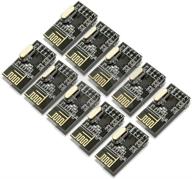
📶 kuman 10pcs nRF24L01+ 2.4GHz Antenna Wireless Transceiver Module for Arduino Raspberry Pi Compatible K19

8 Review
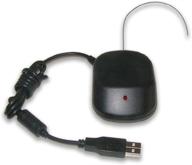
📡 CM19A R.F. PC Transceiver for X10 Devices

8 Review

MikroTik S+RJ10 Ethernet Transceiver

10 Review
Another interesting products
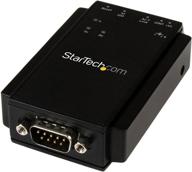
🔌 StarTech.com NETRS232 Serial to IP Ethernet Device Server - DIN Rail Mountable - Serial Device Server - Serial Over IP Device Server (Black)

4 Review
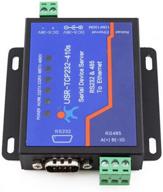
🔌 USR-TCP232-410s: RS232/RS485 Serial to Ethernet Adapter/IP Device Server with DHCP/DNS Support

4 Review
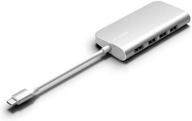
🔌 Juiced Systems Silver BizHUB USB-C Multiport Gigabit HDMI Hub with 3 USB 3.0 Ports, Gigabit Ethernet, 4K HDMI, SD/Micro SD, and USB-C Power Delivery

11 Review
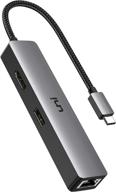
🔌 uni USB C Hub with Ethernet Adapter, 4K HDMI, Gigabit Ethernet, and 3 USB 3.0 Ports for MacBook Pro, iPad Pro, XPS

11 Review

